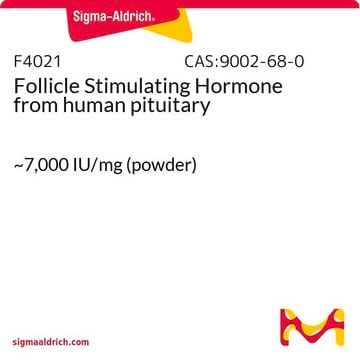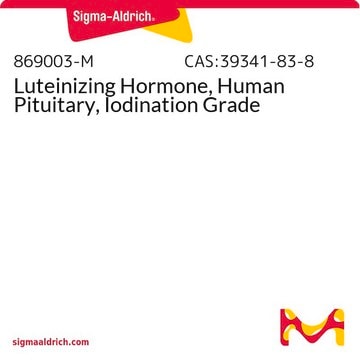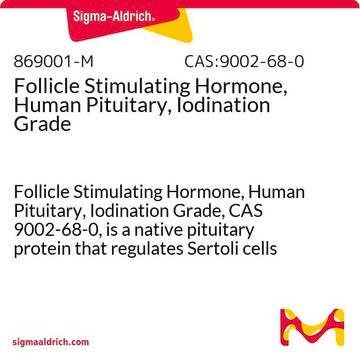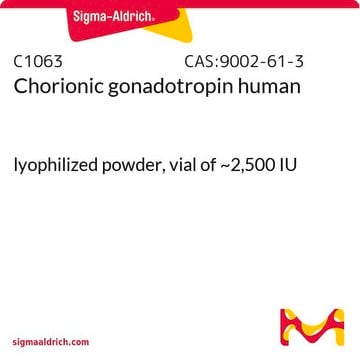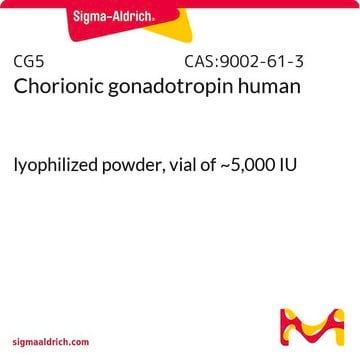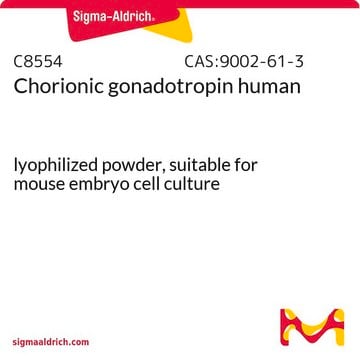For a stock solution, hormones should be reconstituted to ≥1 mg/ml in the presence of a protease-free carrier (0.1-1% ovalbumin, BSA, or gelatin) and a suitable antimicrobial agent. The following general guidelines may be useful:
1. Ovalbumin is generally used when assaying for gonadotropin;
2. If BSA is used, it must be free of gonadotropins and proteases (either crystalline or RIA grade is generally satisfactory);
3. Heat gelatin solutions to 60°C for maximum solubility (1% gelatin for ELISAs, 0.1% for solid phase assays);
4. For the pituitary hormones hFSH, hLH, hPRL, and hTSH, the recommended dilution buffer is 10 mM Sodium Phosphate, 150 mM Sodium Chloride, 1 mg/ml BSA, 0.1% Sodium Azide, pH 7.4 is generally satisfactory for hFSH, hLH, hPRL, and hTSH.
5. For hCG and hGH, the recommended dilution buffer is 100 mM Tris, 1 mg/ml BSA, 0.05% Sodium Azide, pH 8.0 is generally satisfactory for hCG and hGH.
